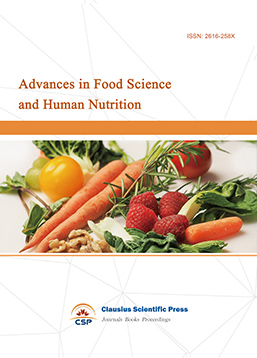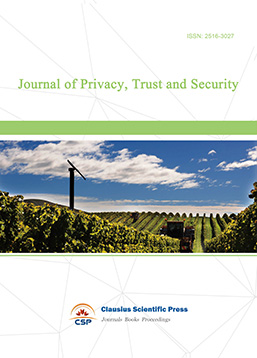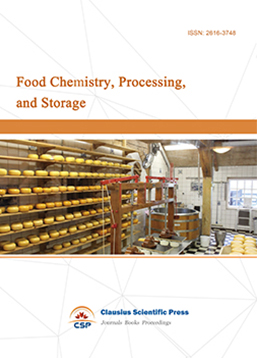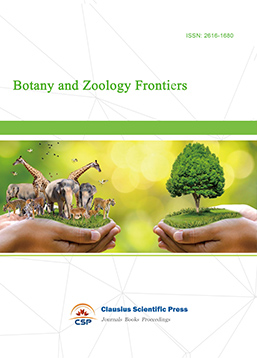Research on the impact of exogenous pollutants on the soil environment and their remediation mechanisms and models
DOI: 10.23977/jmcs.2024.030106 | Downloads: 18 | Views: 1262
Author(s)
Miao Yining 1, Bao Yuhang 2, Zhao Hang 1
Affiliation(s)
1 College of Life Sciences, Zhejiang Normal University, Jinhua, Zhejiang, 321004, China
2 College of Geography and Environmental Sciences, Zhejiang Normal University, Jinhua, Zhejiang, 321004, China
Corresponding Author
Miao YiningABSTRACT
In recent years, with the rapid development of industrialisation, soil heavy metal pollution is increasing, of which cadmium pollution is particularly prominent. Cadmium pollution not only leads to crop root damage, photosynthesis inhibition, but also indirectly affects the safety of human life, remediation of cadmium contaminated soil is urgent. As one of the phytoremediation materials, tall fescue is effective in remediating cadmium-contaminated soil.In this study, we used the cadmium-resistant tall fescue variety "Airey 3" as the material. It was subjected to various concentrations of cadmium stress, and within the same cadmium concentration, different concentrations of citric acid, oxalic acid, and acetic acid were applied. We conducted a comprehensive investigation into the impact of cadmium pollution on the soil environment, aiming to explore the remediation capacity and mechanism of tall fescue in cadmium-contaminated soil. Additionally, we analyzed the relationship between low-molecular-weight organic acids and the root-associated microbiota.The correlation between low molecular organic acids and inter-root microbial community structure, soil enzyme activity and other indicators was analysed. The results showed that all the physical and chemical indicators of the soil were under different degrees of stress under the adversity, and the total microbial amount decreased by 60.12%, the community structure changed, and the enzyme activity, soil nutrient and organic matter content decreased significantly. And certain low molecular organic acid can effectively enhance the repair ability of tall fescue, the maximum average increase in soil organic matter was 119.12%~142.55%, effective phosphorus and quick-acting potassium content increased by 32.87% and 34.58%. In summary, tall fescue has a certain role in the remediation of cadmium-contaminated soil, and the application of exogenous organic acids can effectively enhance the soil remediation capacity of tall fescue in cadmium-stressed environments, which provides a theoretical basis for promoting the management of cadmium pollution in soils and improving the value of cadmium-contaminated soil development and utilisation.
KEYWORDS
Tall fescue; cadmium pollution; phytoremediation; low molecular organic acidsCITE THIS PAPER
Miao Yining, Bao Yuhang, Zhao Hang, Research on the impact of exogenous pollutants on the soil environment and their remediation mechanisms and models. Journal of Modern Crop Science (2024) Vol. 3: 44-54. DOI: http://dx.doi.org/10.23977/jmcs.2024.030106.
REFERENCES
[1] Brainina K, Stozhko N, Bukharinova M, et al. Potentiometric method of plant microsuspensions antioxidant activity determination[J]. Food chemistry, 2019, 278(2): 653-658.
[2] Chen Li-Li. Effect of exogenous organic acids on phytoremediation of cadmium-contaminated soil [D]. Shihezi: Shihezi University, 2022.
[3] Chen W, Guéguen C, Smith D S, et al. Metal (Pb Cd and Zn) binding to diverse organic matter samples and implications for speciation modelling[J]. Environmental science & technology, 2018, 52(7): 4163-4172.
[4] Cieslinski G, Vanreesk C J, Szmigielska A M, et al. Low molecular weight organic acids released from roots of durum wheat and flax into sterile nutrient solutions[J]. Journal of Plant Nutrition, 1997, 20(6): 753-764.
[5] Gong Junhui, Wang Jing. Introduction to the method of enumerating viable bacteria by dilution-coated plate method[J]. Biology Teaching, 2018, 43(2): 2.
[6] Hanlon E A. Elemental determination by atomic absorption spectrophotometry[C]// Handbook of reference methods for plant analysis. CRC Press, 2019, 29 (3): 157-164.
[7] He Junliang, Zhu Yaping, Zhu Mi, et al. Overview of enhanced phytoremediation technologies for heavy metal contamination in soil[J]. Safety and Environmental Engineering, 2019, 26(1): 58-63, 76.
[8] Hu Yue, Fan Hongzhu, Chen Yong, et al. Spatial and temporal evolution of soil pH and its driving factors in a typical cigar tobacco area in Southwest China over the past 35 years[J]. Guangdong Agricultural Science, 2023, 504(1): 75-83.
[9] KUMAR A, DUBEY A. Rhizosphere microbiome: engineering bacterial competitiveness for enhancing crop production[J]. Journal of Advanced Research, 2020, 24(1): 337-352.
[10] Krishnamurti G S R, Cieslinski G, Huang P M, et al. Kinetics of cadmium release from soils as influenced by organic acids: implication in cadmium availability[J]. Jourmal of Environmental Quality, 1997, 26(1): 271-277.
[11] La-Up A, MAHASAKPAN P, SAENGOW U. The current status of osteoporosis after 15 years of reduced cadmium exposure among residents living in cadmium- contaminated areas in northwestern Thailand[J]. Environmental Science and Pollution Research, 2021, 28(1): 20121-20127.
[12] Li C ,Quan Q ,Gan Y , et al.Effects of heavy metals on microbial communities in sediments and establishment of bioindicators based on microbial taxa and function for environmental monitoring and management[J].Science of the Total Environment, 749 (2020):141555-141555.
[13] Li Y, Yao N, Liang J, et al. Optimum biochar application rate for peak economic benefit of sugar beet in China[J]. Agricultural Water Management, 2022, 272(1): 107880.
[14] Nascimento P A, Kogawa A C, Salgado H R N. Turbidimetric Method: a New, Ecological, and Fast Way to Evaluate of Vancomycin Potency[J]. Journal of AOAC International, 2020, 103(6): 1582-1587.
[15] Niu Xueli, Qiu Wenxin, Yang Jinyu, et al. Effects of vetiver root secretion on seed germination of two turfgrasses under heavy metal stress[J]. Grass Science, 2020, 37(6): 1074-1087.
[16] O'NEILL L A J, ARTYOMOV M N. Itaconate: the poster child of metabolic reprogramming in macrophage function[J]. Nature Reviews Immunology, 2019, 19(5): 273-281.
[17] PANG Fa-Hu, WU Xue-Jiao, KONG Xue-Fei, et al. Functional stability and applicability of heavy metal passivators to control Cd uptake in lettuce[J]. Environmental Science, 2021, 42(5): 2502-2511.
[18] PEI Lingfang, FAN Guipeng, XIAO Meiling, et al. Comparison of two methods for the determination of catalase in soil[J]. Science and Technology Innovation and Application, 2019 (15): 3-5.
[19] QIN Hong, ZHANG Baofeng, CHEN Junqiao, et al. Foliar regulation of extraction enhancement-chelating agent and phytohormone in cadmium-contaminated soil with associated mineral Sedum[J]. Journal of Soil and Water Conservation, 2023, 37(4): 363-369.
[20] Sparks D L, Singh B, Siebecker M G. Environmental soil chemistry[M]. Amsterdam: Elsevier, 2022, 45(1): 458-464.
[21] STROM L. Root exudation of organic acids:importance to nutrient avail-ability and the calcifuge and calcicole behaviour of plants[J]. Oikos, 1997, 80(1): 459-466.
[22] TAO Zhenpeng, XU Zongheng, DING Junnan, et al. Determination of soil organic matter content in understory based on different methods[J]. Science Technology & Engineering, 2022, 22(10): 85-89.
[23] Wang Qiuying. Effects of externally applied nitrogen and organic acids on inter-root soil microbial population and enzyme activities of grassland morning glory[D]. Jinzhong: Shanxi Agricultural University, 2022.
[24] Wu SJ. Effects of warming and cadmium pollution on soil physicochemical properties and rice NPK uptake[D]. Nanjing: Nanjing University of Information Engineering, 2022.
[25] XIONG Zuoming, YANG Jiahuan, WANG Linan. Response of three turfgrasses to soil heavy metals lead and cadmium stress[J]. Journal of Yangzhou University (Agriculture and Life Science Edition), 2019, 40(6): 117-121.
[26] Yaashikaa P R, Kumar P S, Jeevanantham S, et al. A review on bioremediation approach for heavy metal detoxification and accumulation in plants[J]. Environmental Pollution, 2022, 301(1): 119035.
[27] YANG Xiao'e, YANG Mingjie. Migration of cadmium from agricultural soils to the human food chain[J]. Guangdong Trace Element Science, 1996, 3(7): 1-13.
[28] Yang J T, Wang J F, Liao X Y, et al. Chain modelling for the biogeochemical nexus of cadmium in soil-rice-human health system[J]. Environment International, 2022, 167(1): 107424-107434.
[29] YU Ping, WANG Zilong, SHENG Jie, et al. Spatial distribution and correlation between soil NPK and Cd[J]. China Soil and Fertiliser, 2020, 62(5): 17-25.
[30] Yuan Zhengtong, Fan Xiaodan, Wang Xueqi, et al. Progress of microbial-phytoremediation of heavy metal contamination in soil[J]. Journal of Tianjin University of Urban Construction, 2023, 29(4): 253-261.
| Downloads: | 684 |
|---|---|
| Visits: | 50866 |

 Download as PDF
Download as PDF



